– Latin Fitness E.L.F.
![]() Foxtrott
Foxtrott
The theatrical steps of actor Harry Fox are responsible for the dance revolution initiated by the Foxtrot shortly after 1913. Ragtime, the sound of the Big Band and the slow rhythm adopted by dancers of the Foxtrot provided an irresistible combination which has stayed alive to this day and is actually the basis of all modern dance steps which are encountered in most of today‘s social dances.

![]()
![]() Tango
Tango
The Tango originates from the folk dances of Argentina with influences from Cuba, Brazil, Mexico and Spain. The dance can be traced back to the 19th century as having the name “Milonga” which later became “Tango”.
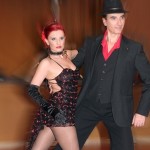
Today it is danced all around the world, the style adopted depending on the traditions of each country. It owes its fame to Rudolf Valentino and the 1921 film, “The Four Horsemen of the Apocalypse”.
![]() Waltz
Waltz
The Waltz is considered a dance for all ages and is the oldest still popular dance. The original “Viennese Waltz” evolved from Bavarian folk dances and was inspired by the melodies of Strauss and Chopin. 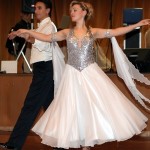 It was introduced to the ballroom at the beginning of the 19th century and has been part of dance competitions since 1953. The fast pace of the Viennese Waltz was developed by the beginning of the 20th century and named the “American Style” (medium and slow time). The direct, close contact of partners was regarded as particularly daring. It became more respectable as a social dance when at the turn of the 20th century it was danced in public by Queen Victoria. The American Style Waltz is only just one hundred years old involving slower, simpler steps while a second variation evolved after 1920 using an even slower pace. The Waltz is the basis for most of today‘s social dances and remains the most popular dance around the world.
It was introduced to the ballroom at the beginning of the 19th century and has been part of dance competitions since 1953. The fast pace of the Viennese Waltz was developed by the beginning of the 20th century and named the “American Style” (medium and slow time). The direct, close contact of partners was regarded as particularly daring. It became more respectable as a social dance when at the turn of the 20th century it was danced in public by Queen Victoria. The American Style Waltz is only just one hundred years old involving slower, simpler steps while a second variation evolved after 1920 using an even slower pace. The Waltz is the basis for most of today‘s social dances and remains the most popular dance around the world.
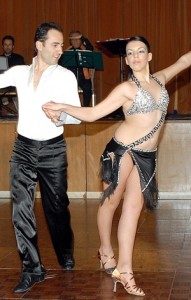
![]() Cha Cha
Cha Cha
The Cha Cha evolved as a variation of the Mambo to which it is closely linked. An easy, fun rhythm involving a greater variety of moves, it also originates from Cuba and is suitable for all ages.
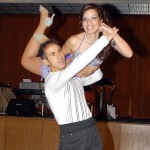
![]() Swing (Rock n’ Roll)
Swing (Rock n’ Roll)
The Swing evolved from the Charleston and appears for the first time as a variation of it in the mid 1930‘s. Benny Goodman and his orchestra is accredited with giving birth to this style of music. The rhythm is related to Rock ‘n‘ Roll as are the actual dance steps.
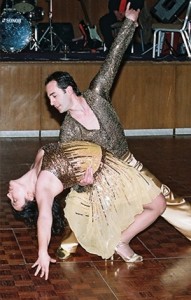
![]() Rumba
Rumba
The Rumba succeeded in uniting the history and traditions of Afro-Cubans, Native Americans and the Spanish in a dance that seems abrupt and exciting but is essentially danced using smooth, sensual movements. After the introduction of the Rumba, Cuban music travelled to neighbouring countries sparking an explosion of Latin rhythm. The American Rumba became the basis for Modern Latin rhythm in the Mambo and the Cha Cha, while one variation, the Salsa, made the rhythms of Central and South America famous worldwide.
![]() Mambo
Mambo
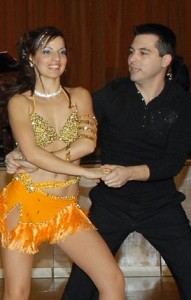
A creation of Perez Prado, the Mambo began in the 1930‘s, as a cheerful Latin rhythm. In the years that followed it evolved into a musical as well as a dance movement, combining American Jazz with elements of Afro-Cuban rhythm. The happy, fast movements together with the wild rhythm of the music quickly became very popular on all the dance floors.
![]() Samba
Samba
The national dance of Brazil was born at the beginning of the previous century and by 1930 had entered the dance halls. The movements are loose but simultaneously very rhythmical. The result is very sensual and often leads the dancers to wild partying. America was introduced to its rhythms by the singer Carmen Miranda at the start of the 1940‘s and today it is said that the only passport need for Brazil is knowing how to do the Samba.
![]() Salsa
Salsa
This dance defines the most significant musical movement in Latin America. Historically a continuation of the 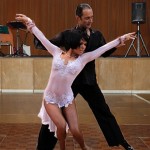 Rumba and the Mambo, it incorporates the dance music and rhythms of Cuba, Central America, Columbia, Haiti, San Dominic, Ecuador and Venezuela. A popular dance rhythm which according to experts, is in complete harmony with the rhythm of the body, the beat of the heart and a zest for life.
Rumba and the Mambo, it incorporates the dance music and rhythms of Cuba, Central America, Columbia, Haiti, San Dominic, Ecuador and Venezuela. A popular dance rhythm which according to experts, is in complete harmony with the rhythm of the body, the beat of the heart and a zest for life.
![]() Bachata
Bachata
 Με γενέτειρα τη Δημοκρατία του Αγίου Δομήνικου, όπου πρωτοεμφανίστηκε μαζί με το ομώνυμο μουσικό είδος, η Bachata εξαπλώθηκε σε ολόκληρο τον κόσμο, αποκτώντας τεράστια δημοτικότητα και τη φήμη του αισθησιακού χορού. Ο πρωταρχικός ρόλος της Bachata, όμως, ήταν έντονα τελετουργικός και αποσκοπούσε ουσιαστικά στην επιλογή ερωτικού συντρόφου...
Με γενέτειρα τη Δημοκρατία του Αγίου Δομήνικου, όπου πρωτοεμφανίστηκε μαζί με το ομώνυμο μουσικό είδος, η Bachata εξαπλώθηκε σε ολόκληρο τον κόσμο, αποκτώντας τεράστια δημοτικότητα και τη φήμη του αισθησιακού χορού. Ο πρωταρχικός ρόλος της Bachata, όμως, ήταν έντονα τελετουργικός και αποσκοπούσε ουσιαστικά στην επιλογή ερωτικού συντρόφου...
Read more Η Bachata ξεκίνησε σαν χορός μέσα από τον οποίο το χορευτικό ζευγάρι πρόβαλε έντονα ερωτικά συναισθήματα – με κυρίαρχο μέσο έκφρασης την κίνηση των γοφών. Συγκεκριμένα, όσο απαλότερη και συχνότερη ήταν η κίνηση της λεκάνης, τόσο εντονότερη ήταν η έλξη που ένιωθε ο ένας για τον άλλο. Για την ακρίβεια, η Bachata ήταν «κάλεσμα για ζευγάρωμα», ένα είδος «ερωτικού πρελούδιου σε δύο πράξεις». Ένα αγόρι φανέρωνε σε μια κοπέλα τον έρωτά του ζητώντας της να χορέψουν Bachata. Αν η κοπέλα ήθελε να ανταποκριθεί στον έρωτά του, τότε δεν είχε παρά να χορέψει με το ίδιο αγόρι Bachata για δεύτερη φορά. Το βασικό βήμα στην Bachata εκτελείται σε τέσσερεις χρόνους: τρία πλαϊνά βήματα προς μια κατεύθυνση με Κουβανέζικο λίκνισμα των γοφών και τα γόνατα ελαφρά λυγισμένα για εντονότερη κίνηση, tap-step (πάτημα στη μύτη του άλλου ποδιού) στο τέταρτο χρόνο και σύγχρονο τίναγμα των γοφών. Μετά το tap-step, το ζευγάρι κινείται προς την αντίθετη κατεύθυνση. Το πρώιμο χορευτικό στυλ της δεκαετίας του 1950 ήταν αργό και το ζευγάρι διέγραφε ένα μικρό τετράγωνο – που θύμιζε έντονα το ύφος του Bolero. H σύγχρονη αντίληψη για την Bachata – όπως διδάσκεται στις σχολές χορού Eurodance – γίνεται κυρίως με πλαϊνά βήματα, έντονη κίνηση των ποδιών και περιλαμβάνει μια μεγάλη γκάμα από στροφές και φιγούρες. Χορεύεται προαιρετικά με αναπήδηση του σώματος: με τα γόνατα ελαφρά λυγισμένα στους έντονους χτύπους της μουσικής, τεντώνοντάς τα στους ενδιάμεσους, ηπιότερους χτύπους. Το ρυθμικό στυλ εναλλάσσεται ανάμεσα στη στενή – ρομαντική – επαφή του ζευγαριού και στο λιγότερο στενό εναγκάλισμα, που όμως επιτρέπει μεγαλύτερη ελευθερία στην κίνηση του σώματος από τη μέση και πάνω.
![]() Merengue
Merengue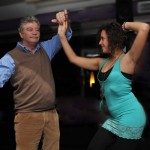
Its name is Spanish and stems from “meringue”, the well-known dessert made from whipped egg whites and sugar…. Read more . . . Its name is Spanish and stems from “meringue”, the well-known dessert made from whipped egg whites and sugar because the way dancers move around the floor is reminiscent, so to speak, of an egg beater in action! Merengue originated from the Dominican Republic in Latin America and was made the country’s official music and dance by Dictator Rafael Trujillo. Non-trivial history question (unanswered?): Could a dictator’s leanings towards a particular music and dance genre lead (unwittingly and / or in the long run) to the country’s democratization?] There are two prevailing stories about the origin of merengue. One story alleges that a great hero was wounded in the leg during one of the many revolutions that left their mark on the Dominican Republic. The villagers welcomed him home with a victory celebration, whereby everyone dancing felt obliged to limp and drag one foot out of sympathy for the freedom fighter’s wound. In another version, the dance originated from the slaves working in sugar beet fields. These slaves were connected to one another by a chain strapped to their ankles and had to walk in such a manner as to drag one leg. Initially, merengue was not danced by individual couples, but was a circle dance, with men and women facing each other and holding hands – at arm’s length to ensure there was no body contact. The dance moves were limited to the shaking of the shoulders and swift movement of the feet. Hip movement – in the uninhibited manner it is performed today – was either non-existent or extremely moderated. Modern merengue – the way it is taught at Eurodance Studios – is easy to learn and essentially a “fun” dance, for beginners and advanced dancers alike, characterized by rhythmic hip motion.
![]() Reggaeton, Oriental, Hip Hop, Jazz, Funky Jazz.
Reggaeton, Oriental, Hip Hop, Jazz, Funky Jazz.
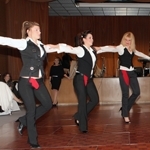
![]() Ο Χασάπικος ή το Χασάπικο
Ο Χασάπικος ή το Χασάπικο
Συντεχνιακός χορός από τη Μικρά Ασία. Οφείλει την ονομασία του στους Χασάπηδες ή Μακελάρηδες των Βυζαντινών χρόνων. Χορογραφήθηκε και εξελίχθηκε σε κάτι τελείως διαφορετικό από την αρχική του μορφή. Σήμερα χορεύεται σ’ όλη την Ελλάδα από άνδρες & γυναίκες. Θεωρείται από τους ξένους ως ο πιο αντιπροσωπευτικός Ελληνικός χορός
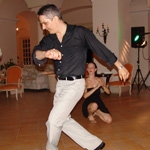
![]() Ζεϊμπέκικος
Ζεϊμπέκικος
Την ονομασία του την πήρε από τούς Ζεϊμπέκηδες, που ήταν πολεμιστές Θρακικής καταγωγής. Το μέτρο του είναι 9/8.
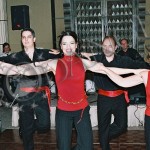
![]() Συρτάκι
Συρτάκι
Το συρτάκι είναι δημοφιλής ελληνικός χορός. Δημιουργήθηκε το 1964 για την κινηματογραφική ταινία “Ζορμπάς ο Έλληνας” (Zorba the Greek) και η μουσική γράφτηκε από τον Μίκη Θεοδωράκη.
Χαρακτηριστικό του χορού (και της μουσικής) είναι η επιτάχυνση του ρυθμού. Το όνομα συρτάκι προέρχεται από την λέξη συρτός.
![]() Χασαποσέρβικος ή Σέρβικος
Χασαποσέρβικος ή Σέρβικος
Εύκολος κεφάτος και δημοφιλής χορός.
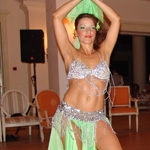
![]() Τσιφτετέλι
Τσιφτετέλι
Αισθησιακός χορός που θα μπορούσε να θεωρηθεί η ελαφρά μορφή του χορού της κοιλιάς. Χαρακτηρίζεται από ελεύθερη μορφή κίνησης σύμφωνα με τον ρυθμό, χωρίς συγκεκριμένους κανόνες.
![]() Ο Τσάμικος χορός ή το Τσάμικο
Ο Τσάμικος χορός ή το Τσάμικο
Ανήκει στην κατηγορία των παραδοσιακών χορών και είναι ένας από τους πιο λεβέντικους ελληνικούς χορούς. Θεωρείται πανελλήνιος χορός, όπως και ο Συρτός Καλαματιανός, γιατί χορεύεται στις περισσότερες περιοχές της Ελλάδας. Σύμφωνα με μια εκδοχή, πήρε την ονομασία του από την περιοχή Τσαμουριά της Θεσπρωτίας. Στην Ελλάδα, ο τσάμικος ήταν ο χορός που εξέφραζε τους κλεφταρματολούς, κατά την περίοδο της τουρκοκρατίας, γι’ αυτό τον συναντάμε και με το όνομα «κλέφτικος».
Το τσάμικο χορεύεται κυρίως στην Πελοπόννησο, τη Στερεά Ελλάδα, τη Θεσσαλία και την Ήπειρο. Χορεύεται κυκλικά με 8, 10 12 ή 14 χορευτικά βήματα και έχει μέτρο 3/4.
![]() Καλαματιανός
Καλαματιανός
Ανήκει στην κατηγορία των παραδοσιακών χορών και συγκεκριμένα στο είδος του συρτού. Είναι ένας από τους δημοφιλέστερους δημοτικούς χορούς
Χορεύεται κυκλικά με 12 χορευτικά βήματα και έχει μέτρο 7/8.
![]() Συρτό Νησιώτικο
Συρτό Νησιώτικο
Υπάρχουν διάφορες μορφές συρτού που χορεύονται στα νησιά του Αιγαίου Στα Δωδεκάνησα συναντάμε κυρίως το συρτό με 6 βήματα. Χαρούμενος χορός με το χαρακτηριστικό “σουστάρισμα” που συναντάμε στους περισσότερους νησιώτικους χορούς.
![]() Κρητικοί χοροί (Πεντοζάλι, Μαλεβιζιώτης, Σούστα, Συρτός)
Κρητικοί χοροί (Πεντοζάλι, Μαλεβιζιώτης, Σούστα, Συρτός)
- Πεντοζάλι
Το πεντοζάλι (ή ο πεντοζάλης) είναι ένας από τους εκφραστικότερους και λεβέντικους χορούς. Έχει γρήγορο ρυθμό με ιδιαίτερη ζωντάνια.
Το πεντοζάλι συνήθως ξεκινά με αργές χορευτικές κινήσεις («κοντυλιές») και στη συνέχεια έχει γρήγορο ρυθμό και χορεύεται με γρήγορες και έντονες χορευτικές κινήσεις. Το αργό μέρος (σιγανός) χορεύεται με 6 ή 8 βήματα, ενώ το γρήγορο μέρος με 5 βήματα που μετρούνται σε 8 χρόνους.
O πεντοζάλης πήρε την ονομασία του από τον αριθμό των χορευτικών του βημάτων και από την λέξη «ζάλο» που στην κρητική διάλεκτο σημαίνει βήμα, δηλαδή πέντο-ζάλη = πέντε βήματα.
- Μαλεβιζιώτης
Ο Μαλεβιζιώτης ή Μαλεβιζιώτικος ή Καστρινός είναι γρήγορος & ζωηρός χορός της Κρήτης.
- Σούστα
Η Σούσταείναι σύνθετος χορογραφικός χορός της Κρήτης, με θεαματικούς σχηματικούς συνδυασμούς.
- Συρτός
Ο Συρτός ή Χανιώτικος ή Χανιώτης είναι ήρεμος χορός και χορεύεται σε κύκλο.
![]() Ηπειρώτικοι, Θρακιώτικοι, Ποντιακοί . . .
Ηπειρώτικοι, Θρακιώτικοι, Ποντιακοί . . .
EURODANCE studios – Social links:


